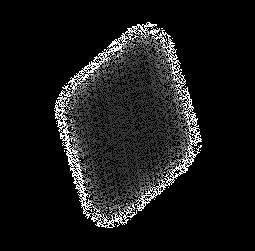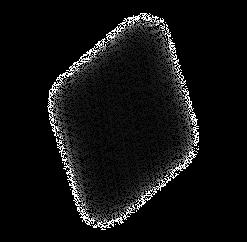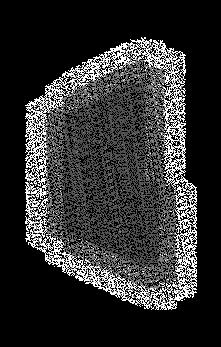
3 minute read
Changing Roles
The future of healthcare consists of new and evolving stakeholder roles.

Advertisement



Increasing worker burnout, growing staff shortages, rising expenses, complex technological advances and the need for more advocacy are all contributing to the shifting roles of providers. Some are taking on completely new roles to manage technology, while others are taking on new responsibilities in their current roles to keep up the standard of care. In the coming years, we can expect to see job descriptions and organizational structures in the healthcare space transform in a substantial way.
From Traditional Nursing to Digital Experts:

Nurses are becoming the bridge between new technology and patients, teaching them new digital forms of disease management.
For example, the role of Chief Nursing Informatics Officer (CNIO) is gaining more traction and becoming an integral part of the system. This role helps set the strategy for the use of technology and data to enhance clinical processes and improve patient outcomes.
Pharmacists Shifting Towards Patient Centric Services:
Shortages of providers during the pandemic has shifted pharmacist roles, with more and more patients expecting increased involvement in their health management from their pharmacists.
For example, a report conducted by Columbia University found that patients trust pharmacists to play a greater role in providing their care. With 80% of patients seeing pharmacists as a key component of their care, pharmacists are currently deemed the most accessible part of healthcare, shifting from transactional care to direct patient care responsibilities.
Caregivers Adopting Advocacy:
In addition to logistical care, caregivers are increasingly standing up for the patients in their lives and providing an intimate understanding of the patient community.
For example, Canadian rare disease patient advocate Beth Vanstone is the primary caregiver for her daughter, cystic fibrosis (CF) warrior Madi Vanstone. She has also been fighting hard for the CF community and rare disease patients for the past decade in an effort to get life-saving medications they need.
Mega Trends in Healthcare
Intelligent Health

The future of healthcare will center around intelligent technology.
Tech innovation in healthcare has been expanding beyond hospital equipment and telehealth, and it will only continue to do so. We are constantly bombarded with new inventions and research, whether it be new modes of medication administration, digital diagnosis and monitoring tools, or the use of augmented/virtual reality for various clinical tasks and surgical procedures. The most prominent innovation of all, has been the use of artificial intelligence (AI) to track, filter, and gather real-world patient or clinical data to produce detailed insights about care experiences.

Non-invasive
modes of medication administration:
From vaccines to inhalers, the ways in which therapies are applied in the future are shifting towards easier, more efficient and less invasive modes.
For example, researchers at Georgia Tech have been working on microneedle patches to deliver vaccines for flu and measles. These microneedle patches are made out of water-soluble materials. Once they penetrate the skin, they dissolve, releasing the substance inside of them, making administration easier and pain-free.

Augmented Reality is the New Clinical Partner: iagnosis and onitoring
Augmented Reality (AR) and Virtual Reality (VR) are not only being used as layers of simulation, but are fueling innovation in clinical practice, trials, device testing and manual operations.
For example, Philips’ augmented reality surgical navigation solution - ClarifEye - combines 2D and 3D visualizations to support surgeons while navigating critical and precise device placement during spinal surgeries.
Tools for Rare Diseases:
Powered by AI-algorithms, sophisticated tools are being developed to identify markers of certain conditions using diagnostics data and symptom descriptions.
For example, Johnson and Johnson has developed 3 SmartTech Tools to help diagnose and track the rare condition Pulmonary Arterial Hypertension (PAH), including an algorithm that helps to identify connective tissue disorder patients who are at high risk of PAH, another algorithm that gleans insights from echocardiograms to identify diagnostic markers, and a risk calculator that tracks progression.
Personalization sources https: www.sciencedaily.co releases 2022 08 22080 8 02 .ht https: www.todays edicaldevelop ents.co news healthcare-personalization-3dprintin g- edical-device- anufacturing https: www.bcbs.co the-health-of-a erica articles new-care- odels-helpcancer-patie nts-navigate-co plex-journeys
Connectivity sources https: www. edicalnewstoday.co articles could-a-phone-app-beco e-an-easyat-ho e-heart- onitor# https: phar aphoru .co news ypso ed-brings-sidekick-on-board-to-fight-selfinjectio n-anxiety https: www.share yjanssenstory.co
Inclusivity sources https: www.fiercehealthcare.co health-tech industry-voices-why-now-ti einclusive-he alth-invest en https: speechaccessibilityproject.beck an.illinois.edu article 2022 0 03 universityof-illi nois-joins-five-technology-industry-leaders-in-new-speech-accessibility-projec https: www.ahajournals.org doi 0.
Changing Roles sources
CIR.000000000000 07 https: www.nursinginpractice.co views digital-nurse-leaders-are-vital-to-thefuture-of-pr i ary-care https: www.specialtyphar acycontinuu .co Online-First Article -2
Phar acists-Ro le-Will-Expand-A id-Pande ic-Provider-Shortages 582 https: toronto.ctvnews.ca obile ontario-fa ily-forced-to-fight-for-life-saving-drughighlig hts-need-for-national-rare-disease-strategy- .58 9037? cache=pi nd vkh 7. 8 03
Intelligent Health sources https: www.npr.org sections health-shots 202 05 27 00 005379 a-vaccinepatch-coul d-so eday-be-an-ouchless-opti https: www.philips.co a-w about news archive standard news press 2022 2022 0 3-p hilips-expands-rollout-of-its-clarifeye-aug ented-realitysurgical-navigation-solution-to-ja pan.ht https: www.jnj.co innovation 3-tools-to-help-diagnose-pul onary-arterialhypertensio



